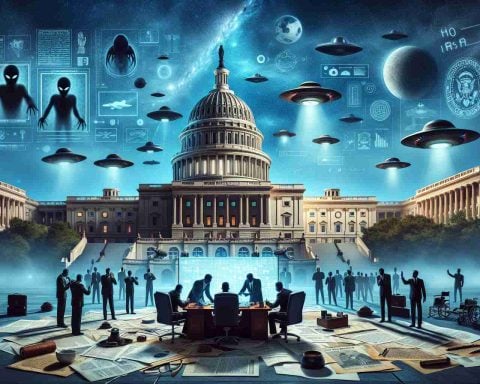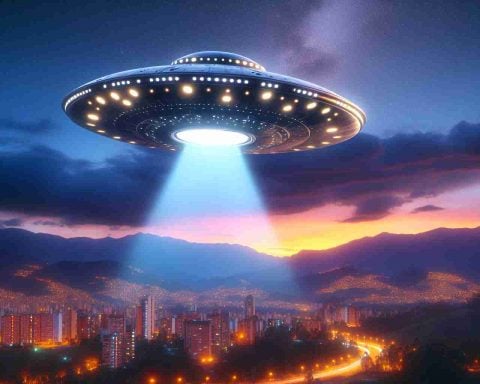- Humans often seek connection in both cosmic exploration and earthly relationships, yet both pursuits can feel isolating.
- Frank Drake’s equation historically estimated the likelihood of encountering extraterrestrial intelligence, emphasizing mathematical probabilities.
- Peter Backus applied Drake’s equation to calculate the odds of finding a perfect partner in the UK, revealing just 26 ideal matches out of 61 million people.
- In Perth, the odds slightly improve, with 156 potential partners among 2 million citizens, but still require significant social interaction.
- While mathematics attempts to quantify connections, love remains unpredictable, often flourishing through chance encounters and social interactions.
- The quest for love, much like exploration of the universe, suggests that proximity and places frequented might hold keys to discovering meaningful connections.
There’s an age-old comfort in knowing we’re not alone in our quests—be it for love or extraterrestrial life. But as the unyielding tides of dating apps lead modern souls to feel adrift in a digital sea, a peculiar question emerges: what if the answer lies in mathematics?
Through time, humans have reached out into the cosmos, releasing silent cries into the space. Yet, much like swiping through an endless gallery of unappealing profiles, we’ve heard nothing but static. A pioneering attempt to bridge the cosmic silence involved Frank Drake’s illustrious equation, aiming to mathematically decode the probability of discovering otherworldly intelligence.
Enter Peter Backus, who ingeniously adapted Drake’s equation for far more terrestrial concerns—calculating the odds of finding a girlfriend in the vast and bustling United Kingdom. With surgical precision, Backus dissected the population of potential matches, and, after accounting for personal preferences and societal norms, arrived at the dispiriting conclusion that only 26 women in 61 million might be his perfect fit.
Suddenly, Location became nowhere near incidental. Perth’s neighborly two million citizens, examined under the same mathematical microscope, promised marginally better odds—a pool of 156 potential partners. Yet, still comes the daunting task: one needs to connect with 24 strangers weekly over a decade to meet “The One.”
These numbers underscore a unique human conundrum: while science quantifies life’s possibilities, love defies such reduction, thriving on social orchestrations and serendipity. Perhaps the places we frequent—the dog park, the local café—bear answers to mysteries both cosmic and intimate. After all, as the saying goes, the universe may be vast, but love is in the neighborhoods we explore.
Unlocking Love with Mathematics: Can Algorithms Really Find “The One”?
How-To Steps & Life Hacks for Using Mathematics in Dating
1. Define Your Universe: Just as Frank Drake defined the universe of potential extraterrestrial life, start by defining your own dating pool. Consider location, age range, interests, and cultural preferences.
2. Personal Preference Equation: Break down your preferences numerically. Consider factors like desired education level, hobbies, and values. Use percentages to weigh these preferences (e.g., education 20%, hobbies 30%).
3. Narrowing Down: Apply your personalized equation to filter dating app profiles or personal ads. This helps quickly identify potential matches worth your time.
4. Use Analytics Tools: Platforms like OkCupid use data analysis to suggest matches. Leverage features that offer match percentages based on your preferences.
5. Observe and Adjust: Keep track of matches and outcomes. Use feedback from dates to refine your equation and approach. Small tweaks can significantly improve results.
Real-World Use Cases
– Data-driven dating is increasingly popular among tech-savvy professionals in urban areas, helping them manage time efficiently by narrowing down huge numbers of potential partners.
– Companies like eHarmony and Match.com have increasingly turned to sophisticated algorithms to help users find love, with millions of success stories highlighting the efficacy of such methods.
Market Forecasts & Industry Trends
The online dating industry is booming, expected to reach a market value of over $9 billion by 2025 (source: Allied Market Research). Companies are investing heavily in AI and machine learning to improve matchmaking algorithms and user experiences.
Controversies & Limitations
1. Over-Reliance on Technology: Not everyone fits into a data model. Authentic connections often spring from unexpected interactions that algorithms can’t predict.
2. Data Privacy Concerns: By entering personal preferences and data, users risk privacy breaches. Recent controversies over app data mishandling have made users wary.
Insights & Predictions
While data-driven methods can streamline the search for love, human intuition and serendipity remain irreplaceable. Future dating apps could combine data analysis with advanced virtual reality to simulate real-life interactions, offering more immersive matchmaking experiences.
Actionable Recommendations
– Expand Your Horizons: While algorithms can guide you, don’t be afraid to step outside your predefined pool. Sometimes the best connections come from the most unexpected places.
– Balance Online and Offline Interactions: Use digital platforms to meet people but foster relationships in person. Frequent local events, clubs, or volunteer activities—real-life settings often nurture genuine bonds.
For those intrigued by using data to navigate their dating life, it’s about finding the balance between numbers and emotions. While calculations can provide a foundation, love is found in the spaces where science ends and human connection begins. Explore more about this field at Science.org and gain insights on how technology intertwines with daily life at Wired.com.



















